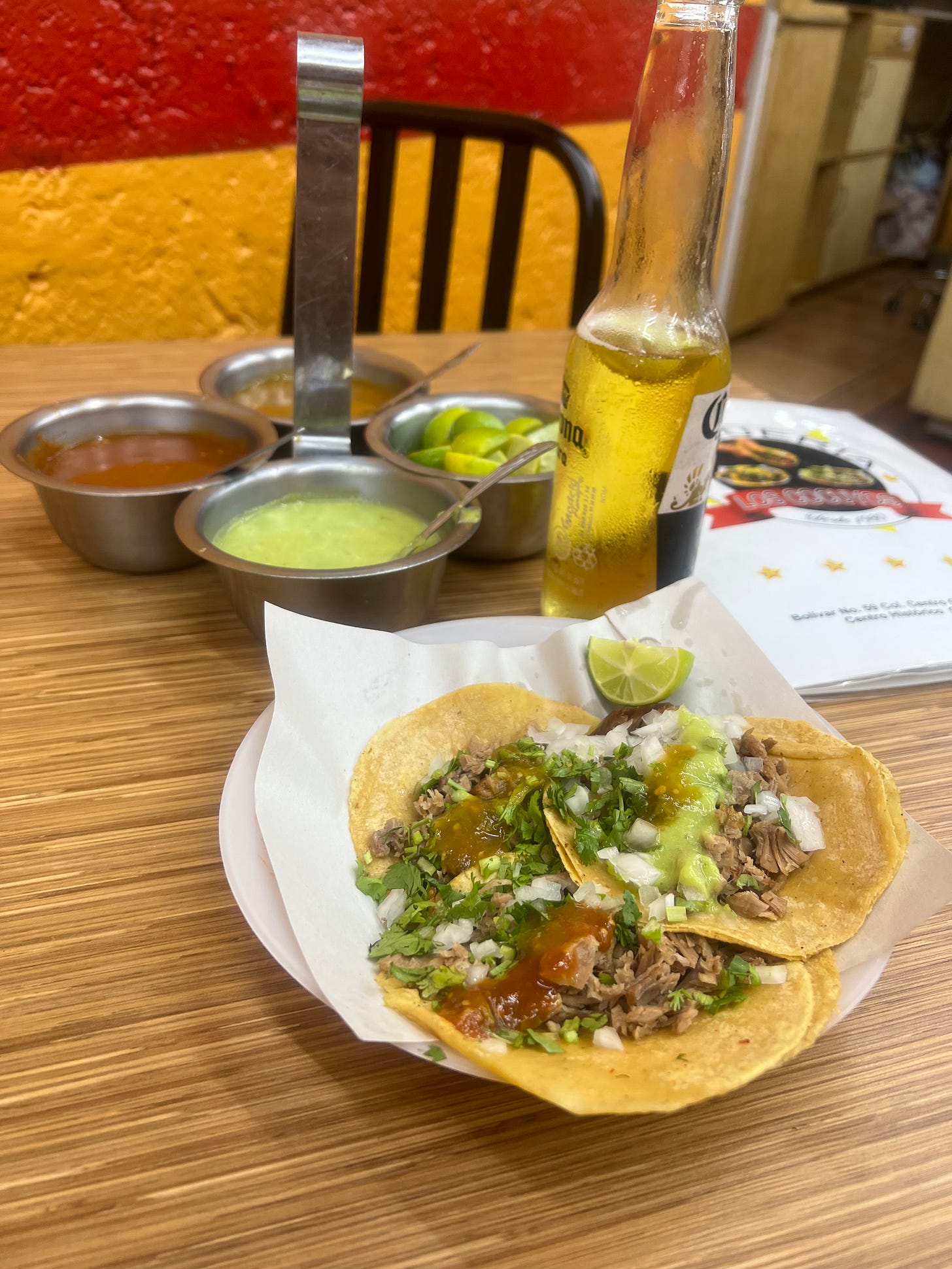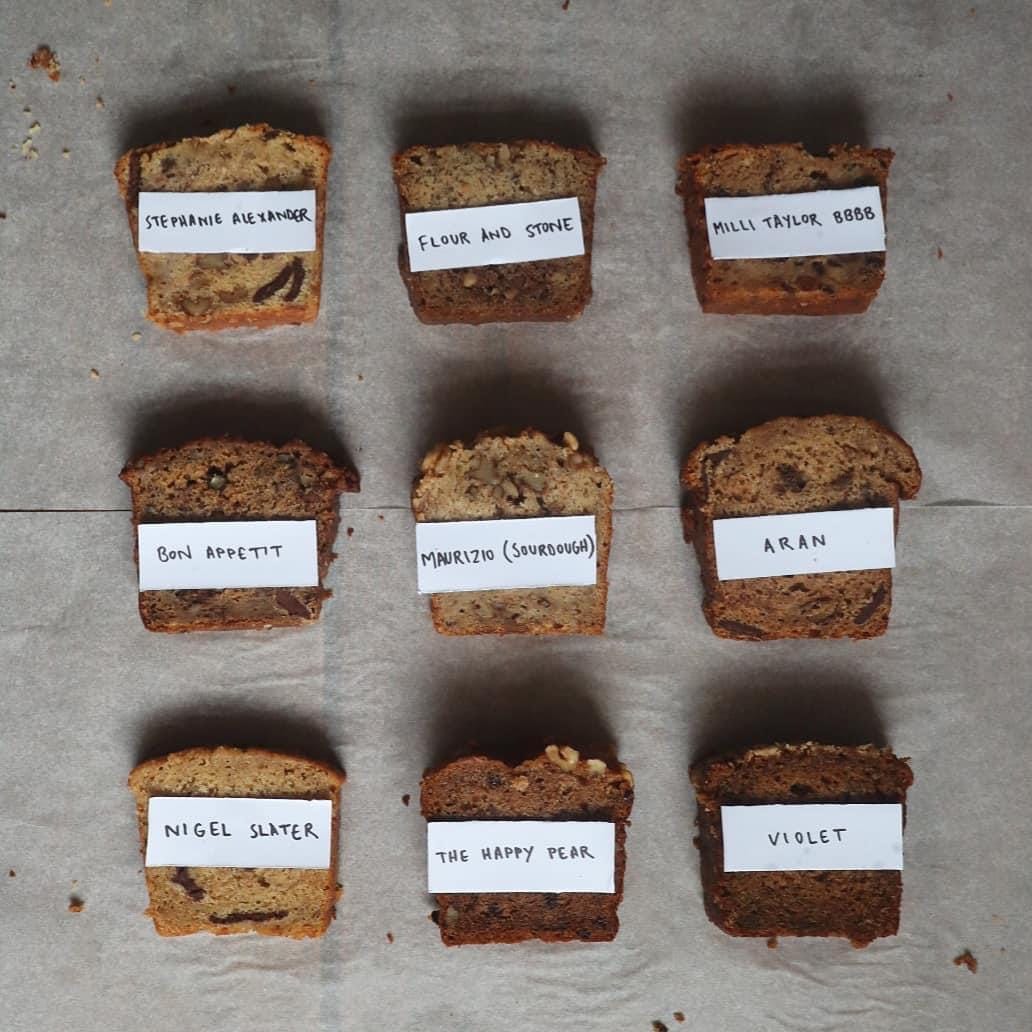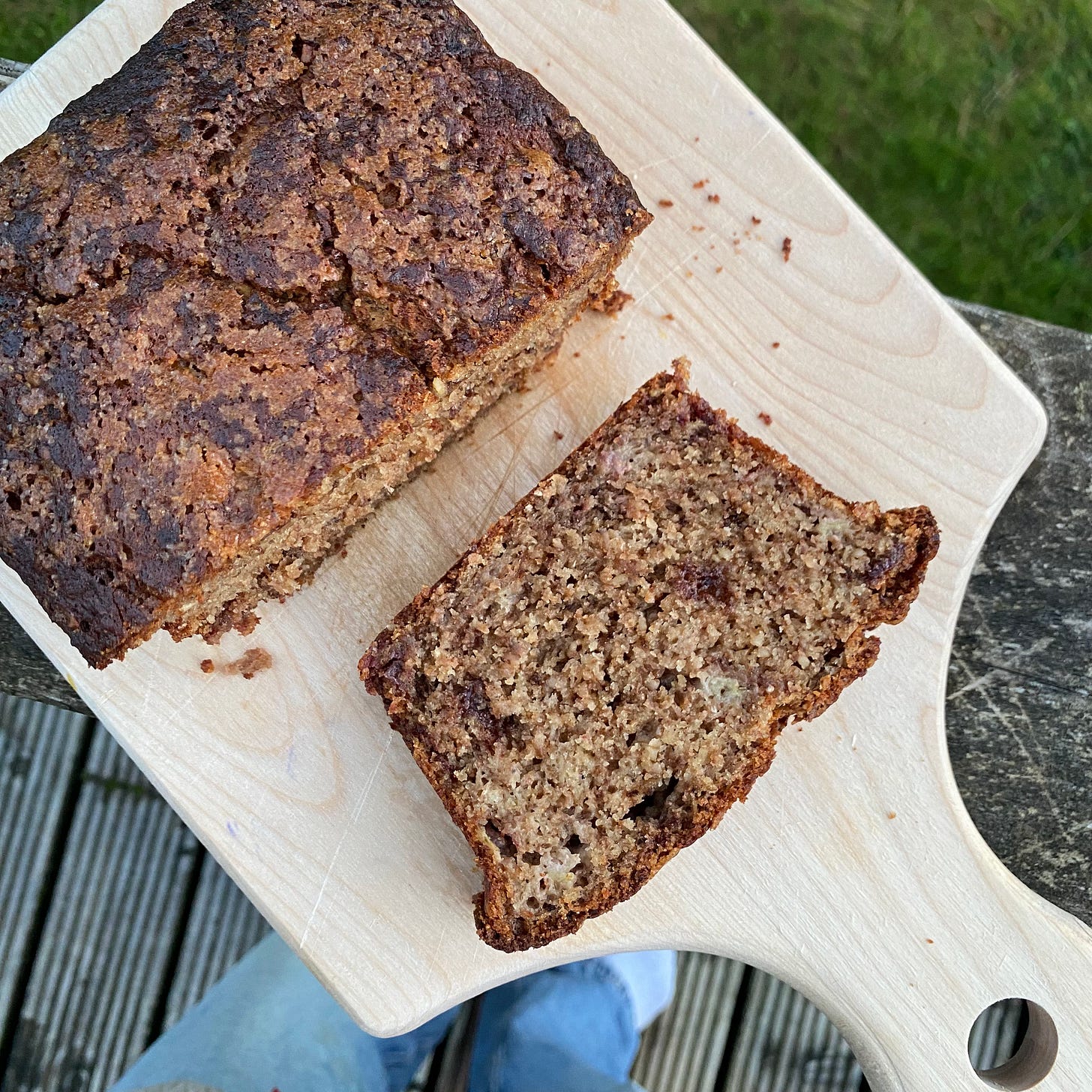Imposter Syndrome and a Recipe for Banana Bread
On feeling like an imposter, and going back to basics with banana bread
What I’m reading: this beautiful piece by Rosanna McLaughlin for Vittles (despite my aversion to cream):
What I’m listening to: Last of the Loving by Coco. Certified summer banger
What I’m eating: lunch at Contramar: highlights include the tuna tostada, red and green grilled snapper, all the desserts (the fig tart!!)
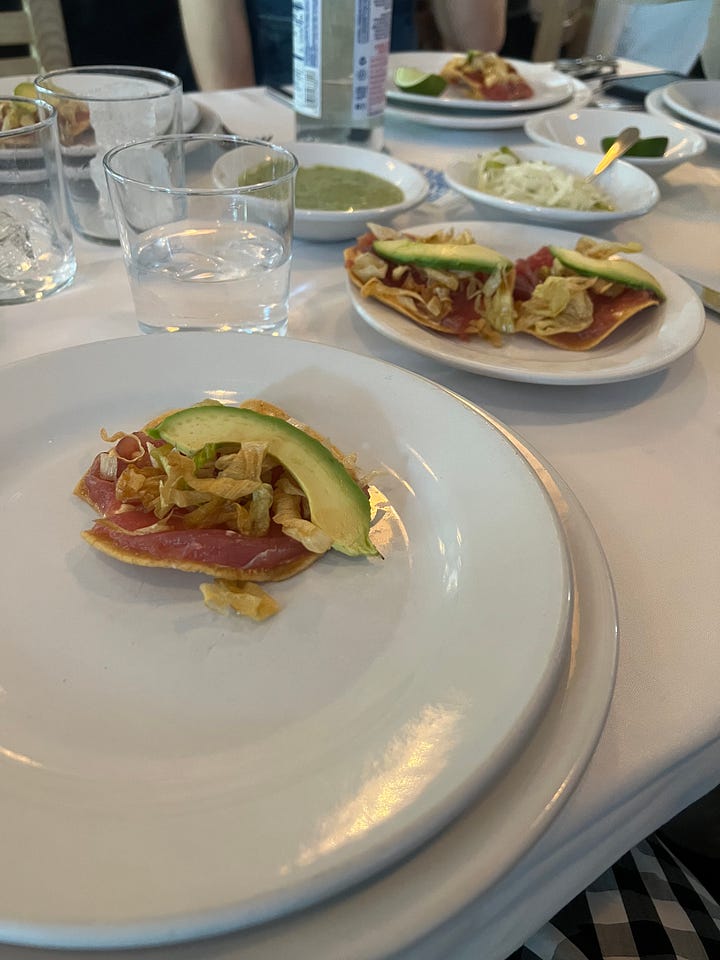
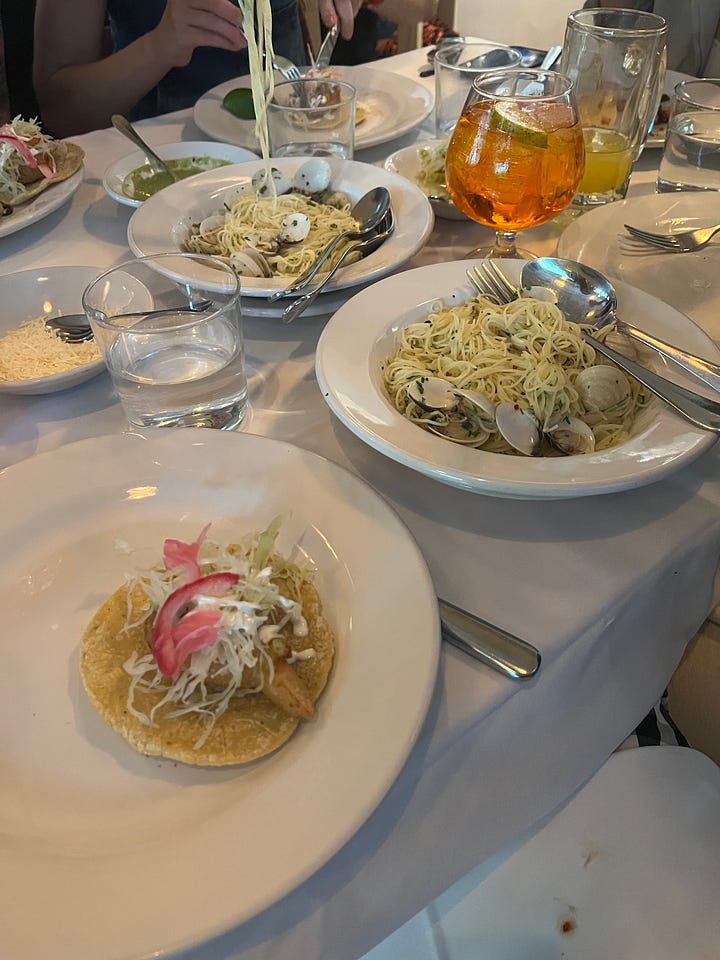
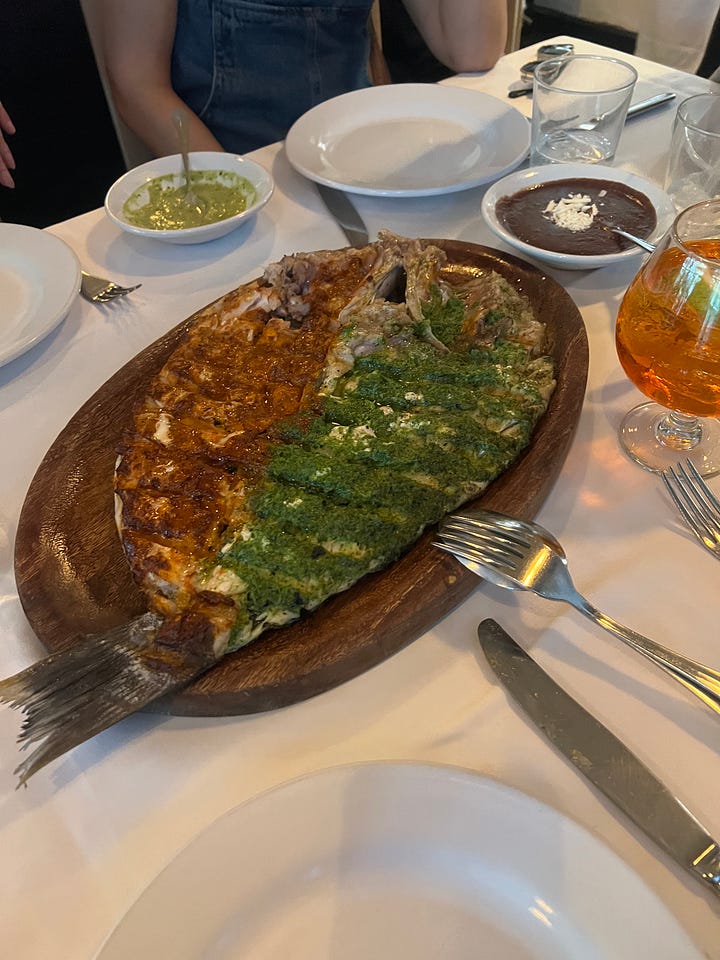
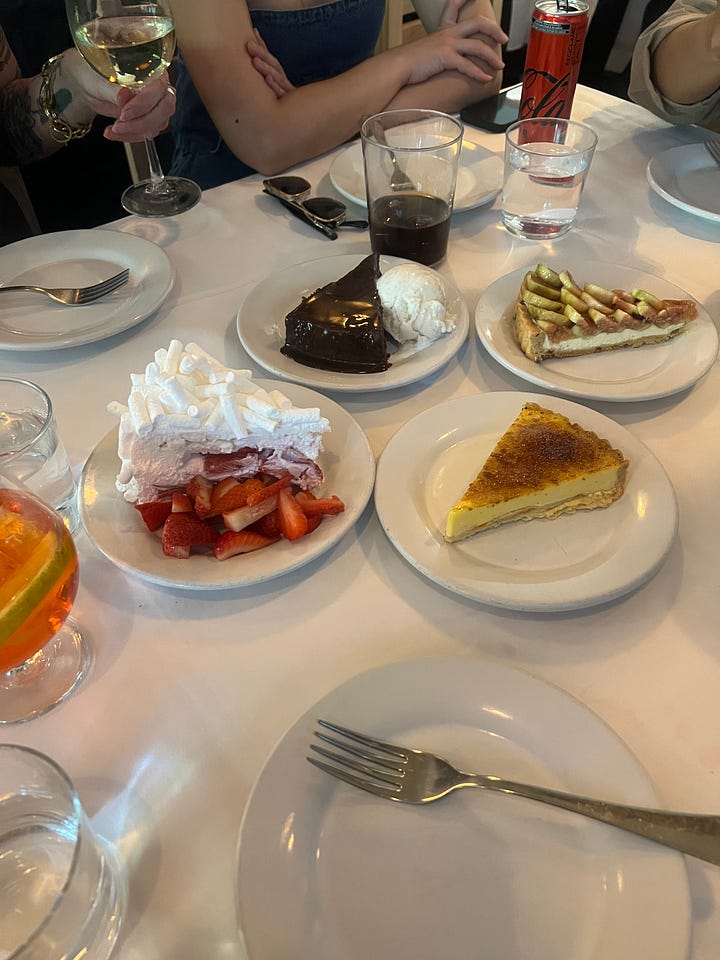
For my first week in CDMX, I stayed in a hostel in the Centro Histórico (Viajero Hostel - I recommend if you’re passing through Mexico City on a budget). I made a lot of new friends, albeit the transient kind you tend to meet in hostels: people you hang out with intensively for 2 or 3 days, and then part ways, never to meet again (I favour the Irish Goodbye). I did some of the cultural things, ate at the restaurant Anthony Bourdain waxed lyrical about, visited Mercado Jamaica, drank a lot of mezcal and pulque.
Pulque is an alcoholic, fermented drink that pre-dates the Spanish conquest of the Aztec Empire. In the Mesoamerican era, it was considered a sacred drink, reserved for sacred rituals and festivals. It’s made from the sap of mature agave plants (maguey), and kind of resembles kombucha in flavour and appearance, but it’s quite viscous and thick.
My good friend and ex-boss JR Ryall put me in touch with a friend of his, who owns 2 wine bars in Mexico City (Imbiss and Oropel). I went to meet him last week in his vermutería, and a chaotic but wonderful night unfolded. I met chefs, bakers and restauranteurs who welcomed me into the fold for no other reason than JR’s recommendation (thanks, boss). One kind introduction from JR, and suddenly I had a place to stay, a group of hospitality friends, and a diabolical hangover. Within the first half hour of meeting him, Ramses (horrified that I was staying in a 10-bed dorm) insisted that I stay with him for the rest of my time in CDMX.
I never know how to introduce myself, especially to fellow hospitality people (career-wise, that is - I’m fairly confident in my own name at this point). I have a slight issue with calling myself a chef, since I only worked in a restaurant for a few months before Covid threw a spanner in the works. I don’t particularly identify as a pastry chef, either, as to me, this seems to evoke a level of precision and rigour that doesn’t quite sit right. When I was working at Popham’s Bakery in London, I felt comfortable calling myself a baker: long night shifts laminating viennoiserie and shaping sourdough seemed to warrant the title. But it’s been months since I handled a pastry sheeter or shaped dozens of loaves of sourdough, so I think it’s fair to say I’ve lost the right to call myself a baker. Am I a cook? I do cook - I love to cook, but to be perfectly honest, I don’t cook as much as someone who calls themselves a cook should: when I’m working in a kitchen, I subsist on staff meal and eggs on toast, and in the past month or two, I’ve been eating tacos from street vendors rather than cook for myself.

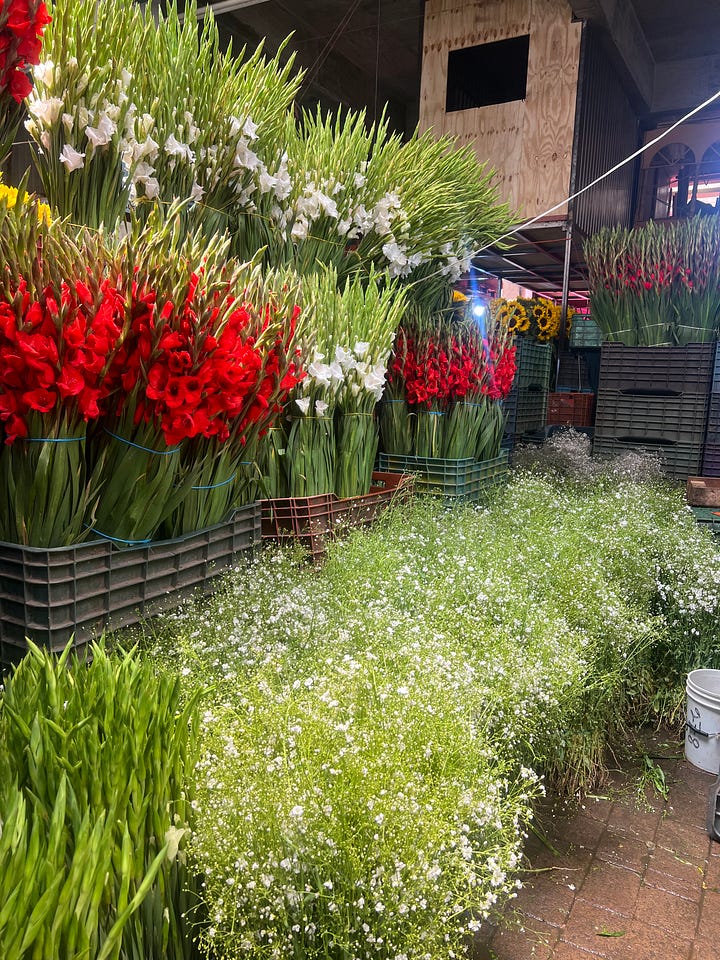

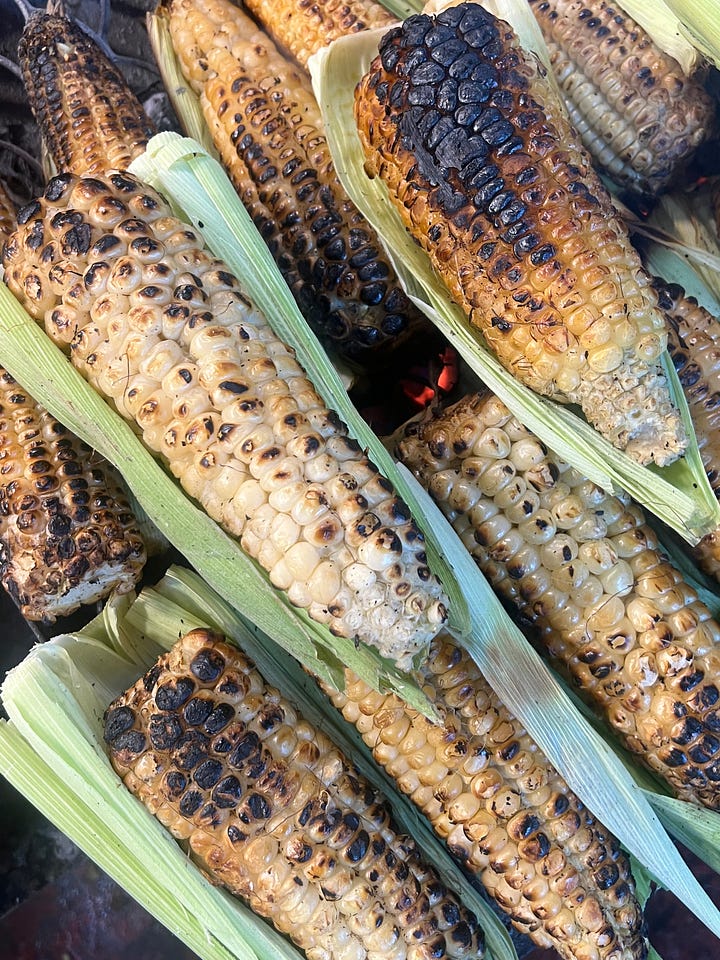
On one of last week’s prodigious nights out at Imbiss, I met a baker called Odette who runs a bakery in Juarez called Ella y Gatsby. I was introduced as a pastry chef, and she immediately asked if I wanted to do a pop-up at her bakery. On auto-pilot, I said yes, enthusiastically. And I do really want to do it - I’m dying to get back into a kitchen, and it’s a great opportunity. But I woke up the next morning with an impending sense of doom: what was I thinking? How on earth am I going to pull this off? To plan a menu, source ingredients, convince people to buy tickets, execute it without any major disasters - the task seemed (and still seems) incomprehensibly huge.
I realise that this seems self-indulgent and over-dramatic. I know that I can do pop-ups: I’ve done several in Ireland (with St. Francis Kinsale, Ursa Minor, the Happy Tummy Co), and a few in London with my friend George. I know that I can cook and bake to at least a satisfactory level: it’s how I’ve made a living for the past three or four years. So why does the prospect of a pop-up here in Mexico City give me a lump in my throat and a knot in my stomach?
Maybe it’s because I’m out of practice, not having worked in a kitchen since I left Ballymaloe House in April. Maybe it’s because I’m in a foreign country where, although I speak the language, I don’t know the ingredients, the culture and the protocol when it comes to event planning. Maybe I’m overwhelmed by how cool all these new hospitality friends are. Maybe I’m missing my Irish family and friends, who would normally rally around me at events like this, reducing the stakes substantially. Maybe I’m worried that it’ll all go terribly wrong, and I’ll be exposed as a fraud. Imposter syndrome is, by definition, irrational, so maybe no matter how long I work in the industry, I’ll always feel like this when faced with professional challenges.
I really hope not, though, as it’s exhausting. I find myself running the numbers, trying to evaluate the probability of a whole range of potential disasters (I think they call this catastrophising). I ignore all evidence pointing to my ability to perform adequately, and instead focus on previous mishaps. I conveniently forget about all the times things have gone smoothly, and instead run a constant loop of negative feedback in my head. It’s a bizarre form of self-flagellation that benefits precisely nobody. It’s a waste of my time, and it’s boring for anybody who has to listen to me rant about my insecurities and inadequacies.
Anyway, in my menu-planning efforts for next week’s pop-up, I’ve been thinking about the things that I feel really comfortable making: recipes I’ve tweaked and polished, things I’ve made in lots of kitchens, with different ingredients and equipment, and to unanimous approval. Chocolate chip cookies is one such example: this recipe feels like a safety blanket. They always work for me, and I’ve received enough positive feedback that I feel comfortable saying that this is a good recipe.
Another such recipe: banana bread. Banana bread might just be my favourite sweet treat, because it’s so VERSATILE. It’s the perfect breakfast cake, especially toasted and served with a strong black coffee. It works as a mid-morning snack, or dessert. If you inexplicably find yourself with leftover banana bread, you can turn it into bread and butter pudding or French toast. It’s the perfect vehicle for those black bananas lurking at the bottom of your fruit bowl. It’s a people pleaser.
The Recipe Testing Process
This was one of the recipe tests I carried out with Mary in London. We made 9 different banana breads (Stephanie Alexander, Flour and Stone, Milli Taylor, Bon Appetit, Maurizio (sourdough), Aran Bakery, Nigel Slater, The Happy Pear and Violet Bakery).
We decided that butter was better than oil, dark brown sugar was better than light brown or caster, and more bananas did not necessarily a better banana bread make (golden ratio: 1 banana per egg). We loved the Demerara sprinkle on top before baking, but found that a half banana (sliced lengthways) and placed on top before baking often sank, and became slimy when left out for a couple of hours. I like cinnamon and choc chips in my banana bread, and also highly recommend the Aran Bakery recipe (Flora Shedden) which uses dates as well as chocolate.
Last year, I went back over my recipe testing spreadsheets from 2020, and developed a banana bread recipe that I can fully stand behind (no imposter syndrome here). I used some wholemeal flour for texture and flavour, and butter instead of oil (obvs). Yogurt or buttermilk reacts with the bicarb for leavening and also for a gorgeous sour flavour that goes perfectly with the bananas. Use really black bananas: the riper they are, the higher the sugar content, and the easier they’ll incorporate into the cake batter. You can freeze bananas when they’re perfectly ripe (or slightly over-ripe) - just peel them and pop them in a bag, ready to defrost and use in this recipe. The chocolate and walnuts are optional but highly recommended. I often find it difficult to bake loaf cakes all the way through, particularly when the batter is a little dense, like this one. It helps to bake at a slightly lower temp, and it should take at least an hour. If the top starts to brown too much, cover with tin foil and continue to bake until a skewer emerges completely clean and piping hot.
Banana Bread Recipe
Upgrade to a paid membership to access this recipe and all previous newsletters in the archive.
Keep reading with a 7-day free trial
Subscribe to Tastebuds to keep reading this post and get 7 days of free access to the full post archives.





